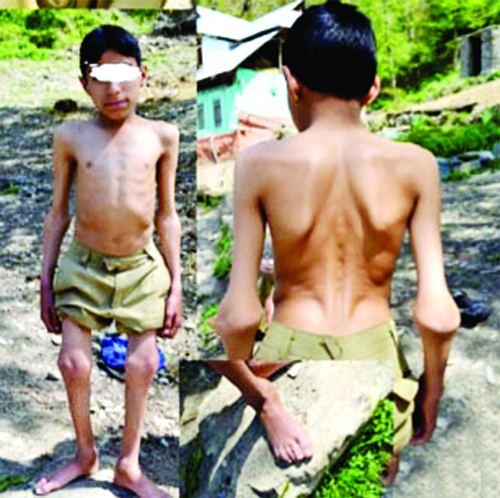Dr. Swarkar Sharma
Jammu and Kashmir State is mainly a hilly terrain, so majority of the population groups exist in small geographic pockets through out the state. With geographic isolation and most of the population groups practicing and performing marriages preferentially within particular subgroups, result in high inbreeding in the state.
Adding to it, majority of population of Jammu and Kashmir practice consanguinity (i.e. marriage with in the family). Scientific evidences now confirm that high consanguinity cause high incidence of rare genetic disorders. In light of such population structure in J&K, a high incidence of rare genetic disorders is expected in the state. Unfortunately, due to lack of good clinical and diagnostic resources, many of these have not been diagnosed or misdiagnosed.
Very recently, our team has successfully characterized one such disorder and identified the genetic cause of it. The research work has now been acclaimed by international scientific community and last week been published in the renowned scientific journal, Nature Scientific Reports. This discovery has solved the mystery of decades old crippling skeletal disorder of Arai village of Poonch District, Jammu and Kashmir, India.
The team identified it as Progressive Pseudorheumatoid Dysplasia (PPD). Otherwise rare, due to lack of characterization and proper management, the disorder has gained alarming proportions in the village.
In many of such disorders, that are not lethal in early age, individuals remain normal at birth and have disease symptoms later in age that keep on intensifying with advancement of age, sometimes resulting in loss of life. These disorders as such appear rare however, if unattended in due course may turn out to be huge problem. Worldwide, Genetics has started to attain key position in healthcare services and rare disorders screening and Orphan drug development is attaining importance as altogether these pose huge health burdens. However, such practices are still lacking in India, especially Jammu and Kashmir.
Understanding the basics of inheritance is essential as it helps to figure out the plausibility of a disorder as an inherited disease or genetic disease. For a brief overview, Deoxyribonucleic Acid (DNA) contains biological instructions (called the genes) for the various functions in the human body. As DNA is inherited, these instructions are inherited from parents to children.
Sometimes, if an error occurs in a gene (mutation), that could be by chance, the biological instructions are affected or changed, resulting in a disease situation. And once this change appears, may be inherited to next generation and in due course mutation and disease keeps accumulating in the family. It may attain alarming proportions if unchecked as we had seen in Arai Village. So, it is very critical to identify families where such disorders exist. Though identification and characterization of such disorders is complicated, it is relatively easy to find if a disorder is Genetic or hereditary. The rule of the thumb is, if a disorder could not be diagnosed conventionally or the exact cause is not known, might have a genetic component involved. Patients suffering from such disorders most of the times do not respond to conventional therapy or despite treatment, partial relief or symptoms do not vanish and reappear.
The main key component: more than one person is affected in extended family (that involves, paternal and maternal grandparents, uncles, aunts, cousin etc). Such disorders ask for special approach and I invite sharing such information at swarkar. sharma@ smvdu.ac.in or sawerkar@gmail.com, to help you or the family in better understanding.
(The author is Co-ordinator, Human Genetics Research Group, School of Biotechnology Shri Mata Vaishno Devi University Katra.)
Trending Now
E-Paper


